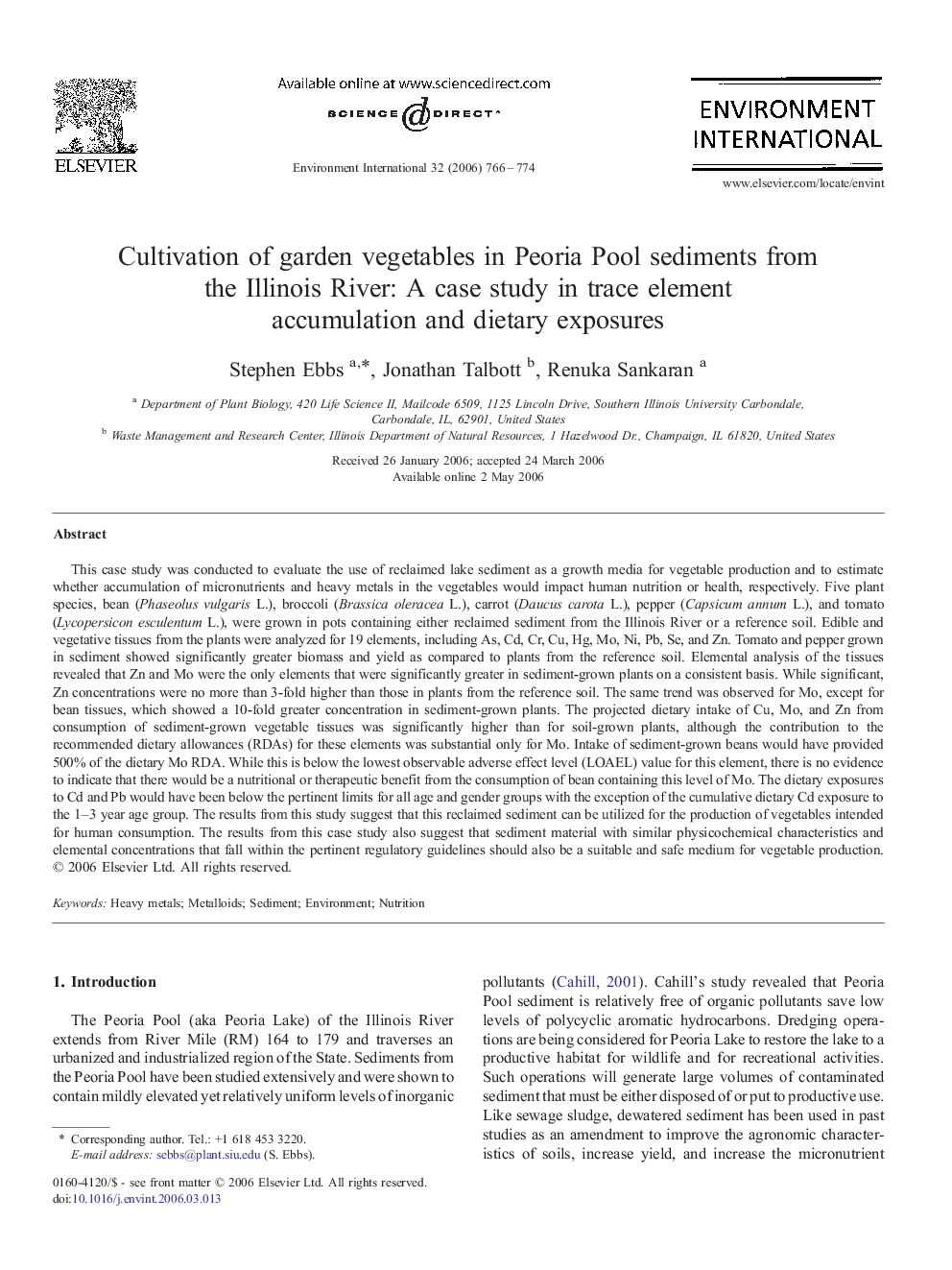| کد مقاله | کد نشریه | سال انتشار | مقاله انگلیسی | نسخه تمام متن |
|---|---|---|---|---|
| 4423592 | 1308833 | 2006 | 9 صفحه PDF | دانلود رایگان |

This case study was conducted to evaluate the use of reclaimed lake sediment as a growth media for vegetable production and to estimate whether accumulation of micronutrients and heavy metals in the vegetables would impact human nutrition or health, respectively. Five plant species, bean (Phaseolus vulgaris L.), broccoli (Brassica oleracea L.), carrot (Daucus carota L.), pepper (Capsicum annum L.), and tomato (Lycopersicon esculentum L.), were grown in pots containing either reclaimed sediment from the Illinois River or a reference soil. Edible and vegetative tissues from the plants were analyzed for 19 elements, including As, Cd, Cr, Cu, Hg, Mo, Ni, Pb, Se, and Zn. Tomato and pepper grown in sediment showed significantly greater biomass and yield as compared to plants from the reference soil. Elemental analysis of the tissues revealed that Zn and Mo were the only elements that were significantly greater in sediment-grown plants on a consistent basis. While significant, Zn concentrations were no more than 3-fold higher than those in plants from the reference soil. The same trend was observed for Mo, except for bean tissues, which showed a 10-fold greater concentration in sediment-grown plants. The projected dietary intake of Cu, Mo, and Zn from consumption of sediment-grown vegetable tissues was significantly higher than for soil-grown plants, although the contribution to the recommended dietary allowances (RDAs) for these elements was substantial only for Mo. Intake of sediment-grown beans would have provided 500% of the dietary Mo RDA. While this is below the lowest observable adverse effect level (LOAEL) value for this element, there is no evidence to indicate that there would be a nutritional or therapeutic benefit from the consumption of bean containing this level of Mo. The dietary exposures to Cd and Pb would have been below the pertinent limits for all age and gender groups with the exception of the cumulative dietary Cd exposure to the 1–3 year age group. The results from this study suggest that this reclaimed sediment can be utilized for the production of vegetables intended for human consumption. The results from this case study also suggest that sediment material with similar physicochemical characteristics and elemental concentrations that fall within the pertinent regulatory guidelines should also be a suitable and safe medium for vegetable production.
Journal: Environment International - Volume 32, Issue 6, August 2006, Pages 766–774